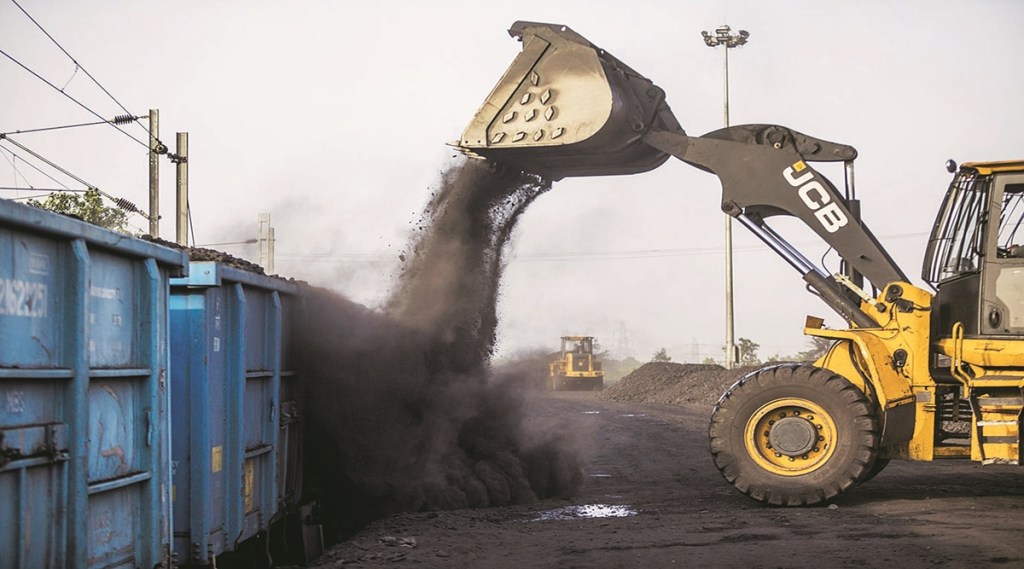Responding to the Ministry of Power’s (MoP)’s letter to all thermal power generators asking them to indicate their coal import requirements for blending, three states — Gujarat, Madhya Pradesh and Andhra Pradesh — have so far given their approval.
The approval comes on the back of the MoP’s letter to all state as well as independent power producers (IPPs) on May 28 that Coal India would import coal for blending on government-to-government (G2G) basis and supply to thermal power plants of state generators and independent power producers (IPPs) on composite billing along with the domestic coal.
The ministry had also advised the generators to assess their requirement of imported coal for the whole FY 2022-23 and urgently inform it. It also advised that the tenders under process by state gencos and IPPs for importing coal may be kept in abeyance to await the price discovery by CIL through G2G route so as to procure coal at least possible rates.
Speaking to FE, an official said that the ministry would wait for a couple of days beyond Tuesday’s deadline for other states to respond, following which Coal India would start the process of procuring the coal. “We will wait for few days for other states to compile their requirements and get back to us,” he said, adding that while CIL is making arrangements for importing the fuel, it is not mandatory for the states to agree to this process. “The states are free to import coal on their own, if they want. The reason why the CIL was roped in was because many states suggested that import of coal was not their domain of expertise and multiple coal import tenders by states would lead to a confusion. They had sought a centralised procurement through Coal India,” he said.
However, while this process has definitely come as a relief for the states, some like Uttar Pradesh and Rajasthan are still not in a position to take the call on it, as the clause that says procurement will be at a cost-plus basis with an administrative charge, looks prohibitive for them.
“While purchasing imported coal from CIL will take a lot of load off us on the processes end, as it would mean that we do not have to go into the tendering, negotiating and other details, there still remains the question of who will foot the bill on the extra cost that imported coal would entail,” said an official of Uttar Pradesh on condition of anonymity, adding that unless the government decides to give a pass through, the Uttar Pradesh Power Corporation (UPPCL) would not be able to give a go-ahead for coal import, which is at least five times costlier than domestic coal, to its generators. “The only other alternative for the us would be to go in for planned power outages,” he said.
Rajasthan chief minister Ashok Gehlot, too, had recently taken to twitter to say that importing coal would entail an extra burden of around Rs 1,736 crore. He had also urged the Centre to waive the mandatory 10% blending directive.
Meanwhile, independent research organisation Centre for Research on Energy and Clean Air (CREA) reported that India seems to be hurtling towards another round of power crisis in July-August due to higher power demand and lower than adequate coal stock at thermal power stations. “If coal stocks are not replenished to adequate levels before this year’s monsoon, the country might be heading towards yet another power crisis in July-August 2022,” the report says.
According to a Central Electricity Authority’s (CEA) daily coal report, out of the total 173 thermal power stations in the country, as many as 101 plants had critical stocks as on May 30. Among those which had lower than normative coal stocks, 35 belonged to the state utilities, nine to NTPC and its joint venture companies and 40 to IPPs. Another nine belonged to imported coal based plants, while eight plants are currently not in operation.
According to the data from Power System Operator Corporation (POSOCO), the maximum power demand met on May 30 was 201.79.20 GW, with the maximum demand coming from northern and western regions, with 63215 MW and 63920 MW respectively, followed by eastern region at 3042 MW and 24418 MW from the southern region. The power ministry predicts an even more significant peak demand in August 2022 at 215 GW.
